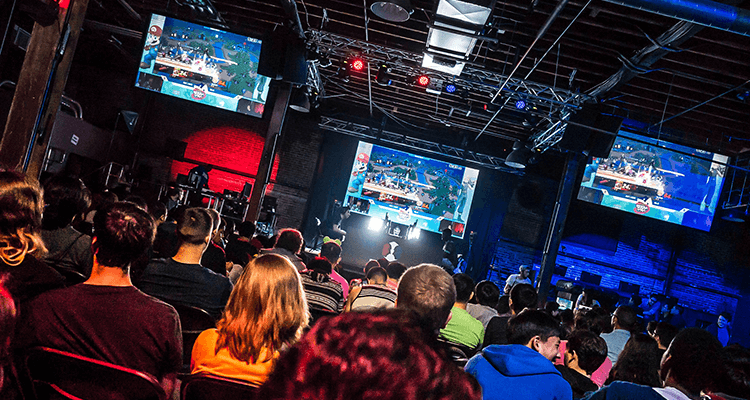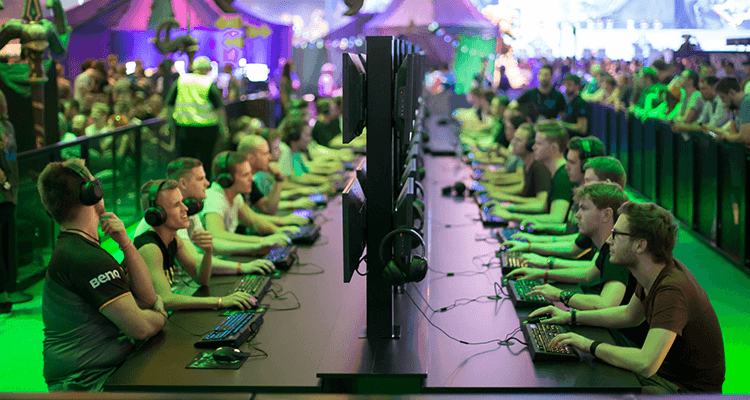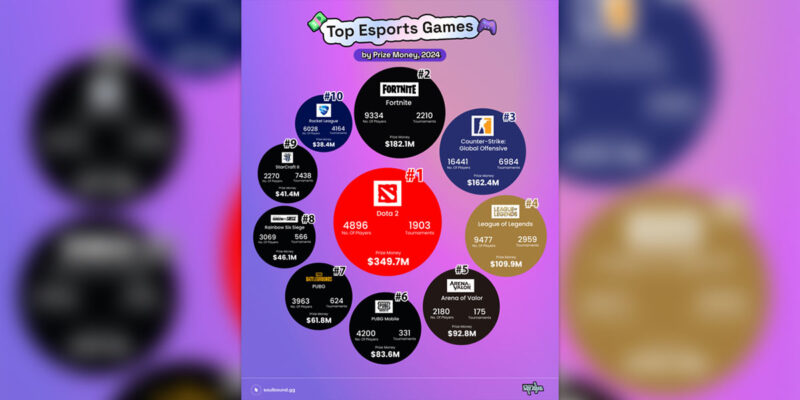Esports in the Academy

Spectators watch during the Greninja Saga national Super Smash Bros for Wii U tournament held in Santa Ana, California on May 20th, 2017. (Photo/Tobechi Ugwumba/CC)
Video games have long been considered by “adults” to be a way for “children” to waste their time. However, over the past several years, as games have become more interactive and team based, they have become more mainstream. Today, watching others play video games is also a popular activity. According to Wikipedia, the 2017 League of Legends annual finals tournament had 60 million viewers. Compare that with the 28.22 million people who watched the World Series the same year. Clearly, esports has an enormous fan base and presents a great market for integrators, designers and all in the AV world.

The gaming room the author describes at Central Maine Community College. (Photo/Scott Tiner)
In April of 2019, Central Maine Community College (CMCC) opened Maine’s second esports arena. Since they are right around the corner from where I work, I took a visit to tour the facility and have a chat with the dean of information technology, Bob Boucher. In the fall of 2018, CMCC began the realize the potential for student recruitment in esports. They completed the full install with all internal work. The install includes five televisions along a wall, each equipped with a PlayStation Pro, Xbox 1 and Nintendo Switch. Additionally, they have five pods of six sets of computers. The computers are AlienWare Area 51 thread rippers. Each of the pods has a television mounted on the wall next to it, that can display video from any of the computers in the room. Finally, an electrician at CMCC who likes to tinker in woodworking and electronics built a video wall that sits in the middle of the room, with four built-in televisions, again able to display any of the action. All of this is managed from a central control room. LED light strips give the room an interesting and fun look and feel.
Dean Boucher reported that because much of the work was done in house, the total cost for the room is about $200,000. The room is now on the admissions tour. Boucher reports that the admissions office has been told by over 100 potential students that they have chose to attend CMCC because of this new arena. Additionally, after there was an article in the local paper he has fielded calls from people who want to rent the space, for friendly competitions or even for birthday parties. While they are still figuring out those details, it is clear that there is an opportunity for additional revenue to cover the expense of the space.

Gamers and enthusiasts from all over Florida come to play and watch at EagleLAN on April 29, 2017, held at Alico Arena at Florida Gulf Coast University. (Photo/Aiden Strawhun/CC)
Indeed, the esports community has become a competitive field in which students are recruited and awarded scholarships. The National Association of Collegiate Esports (NACE) now boasts over 148 members. The association’s website reports that there are over $15 million in scholarships and aid for esports participants. Reuters reports that by the end of 2019, esports will be a 1 billion dollar industry. For colleges and universities, esports arenas also offer a lower cost of entry than a traditional sporting facility. Around the country colleges construct athletic facilities that cost in the tens of millions of dollars and typically serve a small number of athletes.

Gamers compete in a World of Warcraft tournament in Germany in August 2017. (Photo/Marco Verch/CC)
All this shows enormous potential for the AV market. In my example of CMCC, all the work was done in-house, but that is not a model many institutions could follow, especially as the venues scale to be much larger or much more sophisticated. Even in this facility, it was not clear how easy it would be to switch the video on the displays and there was no central sound system. Having a deep understanding of the industry, the games that are being played, the numbers of players and knowing IT (for the computers and the necessary bandwidth) will be absolutely critical to working through a design with customers. Our industry is starting to see the potential of the industry with a few courses/events aimed at esports during this year’s InfoComm. While all of this article has been about esports in the academy, there are obviously many more opportunities. Commercial venues have and will continue to be developed around the world. These facilities will include all aspects of our industry and unlike many other facilities, AV will be the CENTER of it. They will also be installs that will require regular refreshes as technology advances. The spaces would likely need to have tech support on call (or on standby at the venue) during contests. These are fantastic opportunities for ongoing service contracts.





